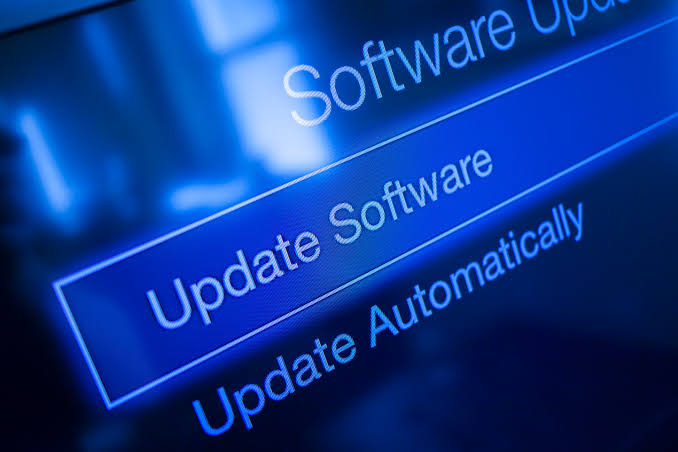In today’s digital age, technology is constantly evolving, and so are the threats that target it. Software updates, often dismissed as minor inconveniences, play a far greater role than many people realize. They are not just about adding new features or improving performance; they are critical for ensuring security, stability, and efficiency in both personal and professional environments. Whether for individuals using smartphones or large enterprises managing complex systems, regular updates are a necessity that cannot be ignored.
Strengthening Security Against Threats
One of the most important reasons for regular software updates is security. Cybercriminals are always looking for weaknesses in software that they can exploit, and outdated systems are the easiest targets. Updates often contain security patches that address newly discovered vulnerabilities.
Without these updates, devices and networks are left exposed to malware, ransomware, and data breaches. For businesses, this can lead to severe financial loss, reputational damage, and even legal consequences. For individuals, it could mean stolen personal information, compromised banking details, or unauthorized access to sensitive files. Regular updates act as a shield, ensuring that known vulnerabilities are quickly patched before they are exploited.
Improving System Stability and Performance
Beyond security, updates also focus on enhancing the stability of software. Developers continuously monitor performance issues and release updates to fix bugs that may cause crashes, glitches, or slowdowns. A device or application that is not updated may become unreliable, leading to frustrating user experiences and wasted time.
In many cases, software updates optimize resource usage, making programs run faster and smoother. For businesses, this translates into improved productivity, while for individuals, it ensures that devices remain responsive and efficient. Regular updates essentially keep technology running at its best.
Access to New Features and Innovations
Updates are also a way for developers to introduce new features and improvements. These can range from better user interfaces to advanced functionalities that enhance usability. For instance, smartphone updates may include new camera modes, while office software might introduce collaboration tools that improve teamwork.
By keeping software up to date, users can take advantage of these innovations without having to purchase new devices or applications. This ensures that technology remains relevant and continues to evolve in step with modern demands.
Compatibility with Other Systems
As technology advances, newer applications, devices, and services are released. Regular updates ensure that software remains compatible with the latest standards and integrations. Without updates, users may find that their applications no longer work with other essential tools, leading to disruptions in workflow.
For example, a business using outdated accounting software may struggle to integrate it with updated banking systems or cloud services. Similarly, an individual using an old operating system may find that new apps cannot be installed. Updates ensure that systems remain adaptable and interconnected.
Reducing Long-Term Costs
While some users avoid updates to save time or effort, neglecting them often leads to higher costs in the long run. Outdated software increases the risk of cyberattacks, which can result in expensive recovery measures. It can also cause inefficiencies, requiring more resources to maintain outdated systems.
Regular updates reduce the chances of system breakdowns and security breaches, saving organizations money on emergency IT support and data recovery. For individuals, it prevents the need for early device replacement caused by poor performance or software incompatibility.
Enhancing User Trust and Confidence
For businesses, providing regular software updates shows commitment to user safety and satisfaction. Customers are more likely to trust software providers who actively address issues and continuously improve their products. Failing to update software can damage reputation, as users may feel neglected or insecure when vulnerabilities are not fixed promptly.
In competitive markets, regular updates also give companies an edge, proving that they are invested in innovation and customer experience. This can strengthen long-term relationships with users and build loyalty.
Encouraging Better Digital Habits
Regular updates also play a role in shaping healthy digital habits. By staying proactive with updates, individuals and organizations develop a culture of responsibility toward technology use. This mindset extends beyond software to include better cybersecurity practices such as using strong passwords, enabling two-factor authentication, and backing up data regularly.
In workplaces, encouraging employees to update their systems regularly reduces the risk of human error leading to security breaches. It fosters awareness of cybersecurity and promotes accountability across teams.
The Role of Automation in Updates
Modern technology has made the process of updating easier than ever. Automatic updates ensure that users do not have to manually check or install updates. This reduces the chances of systems being left vulnerable due to negligence.
Many operating systems, apps, and security tools now include background update features, ensuring minimal disruption to daily activities. However, it is still important for users to monitor critical updates and ensure that essential patches are applied promptly.
Conclusion
The importance of regular software updates cannot be overstated. They are vital for protecting systems from ever-evolving cyber threats, ensuring stability, and providing access to the latest features and innovations. Updates also help maintain compatibility, reduce long-term costs, and build trust between software providers and users.
In both personal and professional settings, neglecting updates poses significant risks that far outweigh the temporary inconvenience of installation. As technology continues to evolve rapidly, adopting a proactive approach to updates is one of the most effective ways to safeguard devices, data, and digital experiences. By prioritizing regular updates, individuals and organizations alike can ensure their systems remain secure, efficient, and ready for the future.



